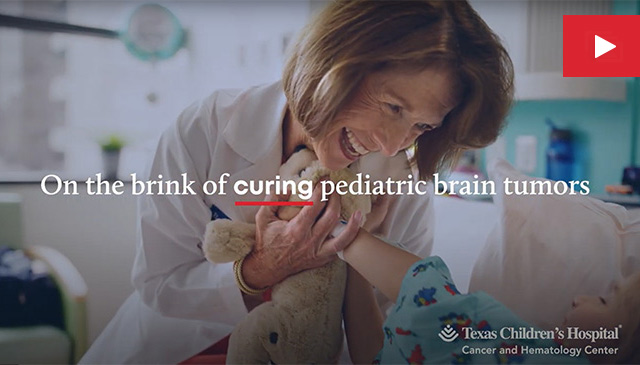
Every day we make the impossible possible by doing things differently. Click here to see it again.

Every day we make the impossible possible by doing things differently. Click here to see it again.
In yet another monumental achievement made possible through the hard work of our One Amazing Team and your commitment to every child and family we serve, Texas Children’s has earned recognition from U.S. News & World Report as the #2 children’s hospital in the country.
In addition to Texas Children’s historic rise to #2 in the overall list, the 2022-23 U.S. News & World Report Best Children’s Hospital survey included Top 10 spots for every subspecialty:
Texas Children’s is also ranked as the #1 children’s hospital in Texas and #1 in the Southwest Region – rounding out the national honors in what President and CEO Mark A. Wallace called a “pivotal moment that reflected everything we’ve accomplished together this year.”
“These tremendous outcomes are the result of the steadfast leadership, unwavering dedication and sincere passion you have for Texas Children’s mission,” Wallace wrote in announcing the exciting news to the organization. “Our eight in-chiefs, our five executive vice presidents, our medical and administrative leaders, and our faculty and staff are without a doubt the greatest teams in our organization’s history.”
U.S. News & World Report introduced the Best Children’s Hospitals ranking in 2007 to help families of children with rare or life-threatening illnesses find the best medical care available. The rankings are the most comprehensive source of quality-related information on U.S. pediatric hospitals.
They rely on clinical data from nearly 200 medical centers through a detailed survey that analyzes measures, such as patient safety, infection prevention and adequacy of nurse staffing. In addition, each hospital’s score is derived from surveys of more than 15,000 pediatric specialists who are asked where they would send the sickest children in their specialty.
In 2021, only 89 children’s hospitals were ranked in at least one of the 10 pediatric specialties evaluated for the annual report. Ten hospitals ranked at the top of their class and were named to the 2022-2023 Honor Roll. For more information, visit usnews.com/childrenshospitals.
“Consistent collaboration, newfound discoveries and extraordinary patient care is what has brought us to where we are today. But we all know that for Texas Children’s, this is only the beginning of our bright future ahead,” Wallace said. “Let’s cherish and celebrate this moment – and then let’s gear up to climb even higher. I have no doubt that with this team, everything is possible!”
To read the full news release announcing Texas Children’s latest rankings from U.S. News & World Report, click here.
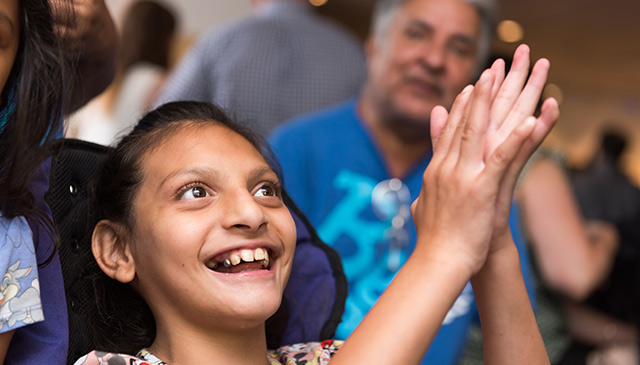
Every year, more than 25,000 patients come to Texas Children’s for the expert care we provide in neurology, neurosurgery, neurophysiology and genetics. They come from across the nation and around the world with neurologic conditions ranging from common to rare to unknown because few places offer the full continuum of care that Texas Children’s provides.
It was fitting, then, that Texas Children’s was recently recognized for its commitment to excellence and comprehensive, high-quality care, once again being named No. 3 in the nation for pediatric neurology and neurosurgery by U.S. News & World Report.
“We are incredibly proud to be ranked once again among the best locations in the nation for pediatric neurology and neurosurgery,” said Texas Children’s Chief of Neurology and Development Neuroscience Dr. Gary Clark. “Our desire is always to provide the very best care for our patients. That is what drives everything we do and what has gotten us where we are today. We’re committed to providing outstanding neurological and neurosurgical care, to conducting groundbreaking research, and to becoming the best program in the nation.”
The U.S. News rankings use an approach that analyzes quality of health care and patient outcomes data from thousands of medical institutions across the country. This includes measuring specialized clinics and programs, external accreditations, and compliance with best practices. A ranking among the top hospitals in a specialty area indicates a commitment to not only providing high-quality care, but also to identifying gaps where improvements are needed.
One recent example was when survey data revealed gaps specific to neurosurgical shunts. Teams were able to review and analyze the data and swiftly close the gaps.
“We are always striving for excellence, so we take the U.S. News rankings very seriously,” said Chief of Neurosurgery Dr. Howard Weiner. “The rankings are just one measure of the trajectory of the Neuroscience Center as a whole. When I first arrived three years ago, the goals were to be the destination for high-quality, innovative and attentive care; to train the leaders in the field; and to lead in the investigation of neurologic conditions. We’re meeting those goals, but what’s key to our success is the ability for everyone – in Neurosurgery and our amazing colleagues in Neurology – to work together for our patients. That’s the driving principle behind Neuroscience at Texas Children’s.”
This year, Neurology and Neurosurgery built on successful existing programs and also implemented new initiatives to improve monitoring capabilities, reduce occurrences of infection and improve the overall quality of care.
The surgical advanced practice provider team implemented a post-discharge call system to assess patients for signs of infection, increases in pain or other possible complications. This system allowed the surgical team to determine if a clinic visit was appropriate, and it helped decrease the number of 30-day unplanned returns to the OR for craniotomy patients and the number of Chiari decompressions patients readmitted within 30 days of surgery.
To ensure patients always receive the highest possible level of care, Texas Children’s has always been committed to recruiting and retaining the best and brightest. The addition of six new epileptologists helped greatly improve monitoring capabilities. This past year, at least 50 percent of epilepsy patients who received surgical resection or laser ablation surgery received intraoperative electrocorticography and/or extra-operative monitoring.
Dr. William Whitehead has been leading efforts to identify opportunities to reduce SSIs for shunt-related procedures. One key strategy was improved compliance with a bundle of evidence-based surgical protocols, which include the administration of pre-operative antibiotics, appropriate hair removal and proper scrubbing of the surgical site. Adherence to these protocols contributed to a significant decrease in the percentage of SSIs for ventricular shunt surgeries.
An expansion in Texas Children’s Epilepsy program has led to an increase in neuro-diagnostic monitoring volumes that eclipses other institutions. With the addition of new team members (i.e., six new epileptologists) and the opening of a dedicated neuro-intensive care unit this past year – one of the first of its kind in the country – Texas Children’s provides the safest and most effective environment for the care of children with seizure activity.
Learn more about Texas Children’s Neuroscience Center.
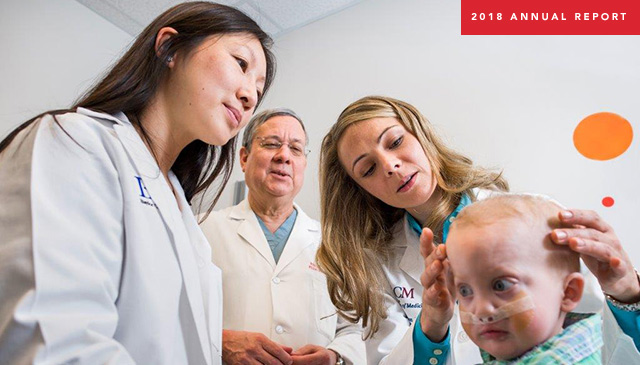
For parents of children struggling with epilepsy, deciding the best path for treatment can be overwhelming. Fortunately, Texas Children’s has introduced a new surgical approach to treat seizures with a less invasive procedure that is preformed through a much smaller opening in the head, which translates to less blood loss, less post-op pain, less discomfort, less swelling and a quicker recovery. Learn more by visiting our 2018 virtual Annual Report.

The results of the 2019 U.S. News & World Report survey of Best Children’s Hospitals are in, and Texas Children’s Hospital is again among the best in the nation!
This year, Texas Children’s tied for third place among all children’s hospitals nationally, a ranking no other pediatric hospital in the state has ever achieved.
In addition, for the first time, Texas Children’s is ranked in the top 10 in each of the U.S. News & World Report-recognized pediatric sub-specialties. Six of our sub-specialties were ranked in the top 3 – two are ranked #1, two are ranked #2, and another two are ranked #3.
“We should all be very proud of this remarkable accomplishment,” said Texas Children’s President and CEO Mark Wallace. “It is because of our One Amazing Team and each team member’s steadfast commitment to quality and excellence that we were able to reach this achievement. Thank you for your dedication to Texas Children’s Hospital and to the patients and families we serve.”
Some highlights of the 13th annual Best Children’s Hospitals rankings for Texas Children’s include:
Our entire list of rankings includes:
#1 Cardiology and Congenital Heart Surgery
#1 Pulmonology
#2 Gastroenterology and GI surgery
#2 Nephrology
#3 Neurology and Neurosurgery
#3 Cancer
#6 Urology
#7 (tie) Neonatology
#8 Diabetes and Endocrinology
#10 Orthopedics
Overall, Texas Children’s exceeded nursing intensity thresholds, made significant improvement in ICU CLABSI rates and exceeded thresholds for hospital acquired pressure injuries.
U.S. News & World Report introduced the Best Children’s Hospitals rankings in 2007 to help families of children with rare or life-threatening illnesses find the best medical care available. The rankings are the most comprehensive source of quality-related information on U.S. pediatric hospitals.
The U.S. News Best Children’s Hospitals rankings rely on clinical data and on an annual survey of pediatric specialists. The rankings methodology factors in patient outcomes, such as mortality and infection rates, as well as available clinical resources and compliance with best practices.
“The results also reflect the efforts of our team and their unwavering focus on the U.S. News survey,” Wallace said. “Compiling and refining our data is a continuous process and, with the support of our medical staff, in-chiefs, service chiefs, as well as Mark Mullarkey, Trudy Leidich, Elizabeth Pham and the entire Quality team, we have made significant strides this past year.”
This year’s rankings will be published in U.S. News & World Report’s “Best Hospitals 2020” guidebook, available in stores mid-September or online at usnews.com/childrenshospitals. You can learn more about Texas Children’s rankings here.
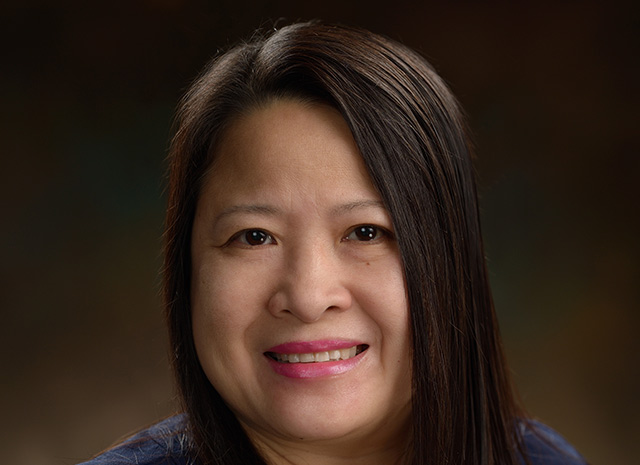
Your name, title and department. How long have you worked here?
MaJomela ‘Joie’ Nagal, MBA, BSN, RN, CPN, Education Coordinator on 10 WT Neurology/Neurosurgery/Epilepsy Monitoring Unit. I have worked at Texas Children’s Hospital for 11 years.
Tell us how you found out you won a super star award.
I thought I was meeting with Sheranda Fesler, our assistant director of Clinical Practice, Nursing to discuss my FY 2019 goals. She came to meet with me but asked me to go with her to attend to a more urgent matter in a haste so I knew it had to be important. I was surprised to see my colleagues, 10 WT Leadership Team, Emily Weber, Jennifer Sanders and Jackie Ward in the conference room. Sheranda announced that I won Super Star Award. I still could not believe it, I kept looking around the room and I thought for a second that I recognized my husband in the corner. That was nice of Sheranda to invite my husband to come over and be part of my celebration. I had no idea how he was invited but Sheranda explained how she orchestrated the event. I could not explain the overwhelming joy and the mixed emotions but I knew in my heart that I was overjoyed.
What does it mean to be recognized for the hard work you do? How has the organization helped you achieve your personal and professional goals?
I am so honored to be recognized and so grateful to have received this award. It gives me a great sense of confidence to know that my hard work is being recognized. It also is comforting to know that my colleagues appreciate my efforts. It is an honor and a privilege to work here at Texas Children’s Hospital and be surrounded with incredible people to work with. Texas Children’s has a lot of wonderful opportunities to offer and these kept me motivated and continued to inspire me to learn more, improve and grow in my nursing profession. My journey here at Texas Children’s started when I was hired as a staff nurse. Texas Children’s has provided an environment in which front line staff like myself was able to engage and join the unit based and house-wide committees which supported nursing practice and fostered participatory decision making, professional accountability and career growth. I have taken on various expanded roles in the unit level and house wide. After fulfilling several unit-based expanded roles and becoming involved with various projects, I began to see the need and the value as an informal leader. Along the way, I have met amazing people and inspirational leaders who were instrumental in achieving my personal and professional goals. I felt that I could best contribute to advancing the growing and evolving nursing profession through nursing education.
What do you think makes someone at Texas Children’s a super star?
A Texas Children’s Super Star must uphold and exhibit a passion for Texas Children’s mission, must provide quality and excellent clinical patient care, a role model in exhibiting integrity and ethical behavior, and value others by showing respect, compassion and empathy. A super star is someone who is able to take action and initiative to solve problems, someone who is not only willing to embrace change but be the change agent.
What is your motivation for going above and beyond every day at work?
My biggest motivation for going above and beyond is knowing that I work with an amazing team whom I really care about and inspire me to do better each day. It gives me sense of great satisfaction knowing that staff are empowered, equipped with knowledge and training to safely care for the patients and ultimately provide quality and excellent nursing care. It also gives me the sense of fulfillment to witness the journey of a novice nurse, to be there to nurture them on their professional development and until they become experts.
What is the best thing about working at Texas Children’s?
The best thing about working at Texas Children’s is working alongside extraordinary people that I share the same passion serving pediatric population. Knowing that I am part of an organization that is family centered care, full of opportunities, supports nursing practice, advancing in technology and serves not only the children but as well as women in the global community and more importantly leading in patient care, education and research.
What does it mean to you that everyone at Texas Children’s is considered a leader? What is your leadership definition?
I believed that commitment to excellence starts with the leader, so know in your heart that where you are is where you were placed to serve and share your skills and talents. A leader is able to develop others by highlighting their strengths, minimizes their weaknesses and builds upon that. A leader is someone who is an effective communicator, can connect with staff, can foster a positive work culture environment, able to incorporate core measures in daily practice. Someone who is a positive influencer, can lead by example, is reliable and trustworthy.
Anything else you want to share?
I would like to thank my fellow Educator, Heather Morand-Reid who nominated me and to the 10 WT staff and the Leadership Team whom she collaborated with to make this possible. Thank you team!
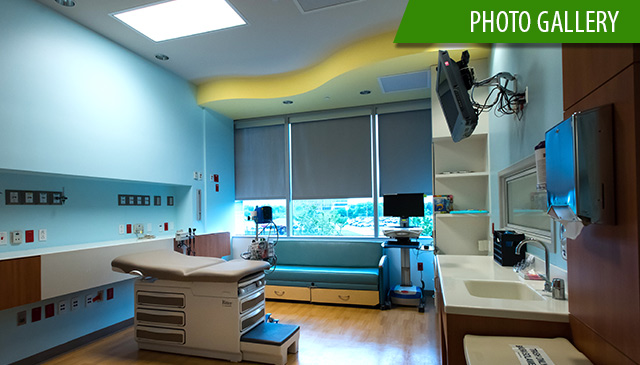
On March 25, the first patient was seen in the new expansion of Texas Children’s Hospital West Campus Sleep Center. Going from six beds on the fourth floor, to nine beds with six available for future expansion on the second floor, the center will now be able to improve access for patients waiting to be treated for sleep conditions.
“We get about 40 to 50 referrals for a sleep study per day,” Neurophysiology Manager Wes Moulden said. “We were looking at anywhere between three to seven month wait times. Now that we have expanded the sleep lab we’ll be able to start diagnosing more children with sleep disorders, and doing sleep studies more efficiently.”
Texas Children’s Sleep Center is one of the few accredited centers in the country specializing in children’s sleep disorders. A sleep disorder is a disruption in a child’s normal sleeping pattern. The sleep center evaluates and treats common sleep disorders in children including problems falling asleep or staying asleep, sleepwalking and abnormal movements during sleep.
“An accredited pediatric sleep center is very rare and all three of our sleep labs have that recognition, Moulden said. “Another unique thing about our sleep center from a diagnostic standpoint, is that all of our technologists are registered technologists who have been formally educated and trained in this skill which is not normally the case.”
Our prestigious credentials also draws the attention of patients from all over the country to our sleep centers. In 2013, Maria Wilson moved her family to Houston from Idaho so that her daughter Sophia could be treated at our sleep center for what was eventually diagnosed as narcolepsy.
“I knew it was going to be a better situation,” Wilson said. “It was very nerve racking and I was nervous, but I knew it was a better move for us to be seeing doctors that have more experience with my daughter’s condition.”
Since being diagnosed and treated frequently at our West Campus Sleep Center for the past six years, Maria says that Sophia is doing much better and is also receiving a great deal of help as they prepare to transition out of the pediatric care system.
“We love Texas Children’s Hospital! After we got established as patients, we got to know the doctors and built relationships with them. That really helped her quality of life when it comes to going to school and functioning better overall,” Wilson said. “Now she’s transferring slowly to adult doctors, and I’m kind of sad. But for us, we love Texas Children’s, we love the doctors and nurses here, and the care that she’s received, so it is comforting to know that we have them in our corner.”
Last week the sleep center team members, administration, and executives gathered on the second floor of West Campus for a ribbon cutting that marked the opening of four sleep clinics, and nine sleep lab beds.
“I wanted to thank all physician leaders, operations leadership, and anyone who had a hand in this much needed expansion,” Texas Children’s Hospital West Campus Vice-President Ivett Shah said. “Texas Children’s is dedicated to improving access to care and this expansion is another way that West Campus continues to provide high-quality care to the West Houston community and throughout the state of Texas.”
The rooms in the sleep center also have the capacity to perform electroencephalogram studies during the day (EEG), in-room monitoring devices, and a host of other quality equipment to ensure sleep studies are carried out properly, along with a scorer/nurse workroom.
“This space was specifically created with the comfort of the patient in mind,” West Campus Respiratory Care and Clinical Support Services Assistant Director Gbolahan Harris said. “Having these clinics and labs in one space helps to reduce patient and family anxiety while normalizing the experience for a sleep study within the sleep center.”
Rooms on the floor also have the flexibility to be converted back into Acute Care beds if West Campus reaches a point where there is a need.
In addition to larger rooms and more workspace, the idea was to increase the number of providers as well. Prior to opening the expansion Lacie Petitto began as the first full-time nurse-practitioner that will be working in the clinic.
“My background is in sleep medicine so I am so excited for the expansion and my new opportunity to treat children in the sleep center,” Petitto said. “When I was approached by the sleep division for this leadership position I was overjoyed to be a part of this opening. This type of work helps feed my passion for sleep medicine and treating patients with sleep disorders.”
Although they are not board certified to read sleep studies, however clinically, Advance Practice Nurses (APN) can see the patients, assess, diagnose, and treat them as well. This allows clinic volumes to open and more patients are seen and treated in a much more efficient way.
“That’s never been done before at Texas Children’s as far as having a full-time nurse practitioner for sleep,” Moulden said. “The center is multi-faceted we have a variety of providers. Some are neurologists, some are pulmonologists, and we are the primary pediatric partner for the Baylor College of Medicine Sleep Fellowship program where we train physicians as well.”
The ultimate goal of the sleep center moving forward is to continue to provide the same high-level services, but on a larger scale.
“Sleep providers should have dreams, and their dreams should come true as they have today,” Texas Children’s Sleep Center Medical Director Dr. Daniel Glaze said. “We anticipate a lot of work, but it will also be a lot of fun. We look for this to be a model for other sleep institutions, and are committed to providing the best diagnostic and overall care for children with sleep complications.”